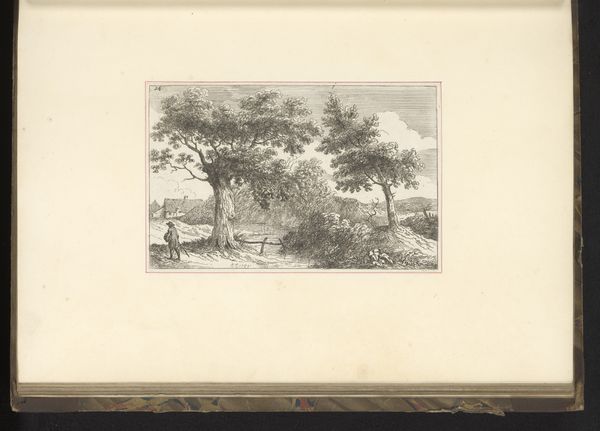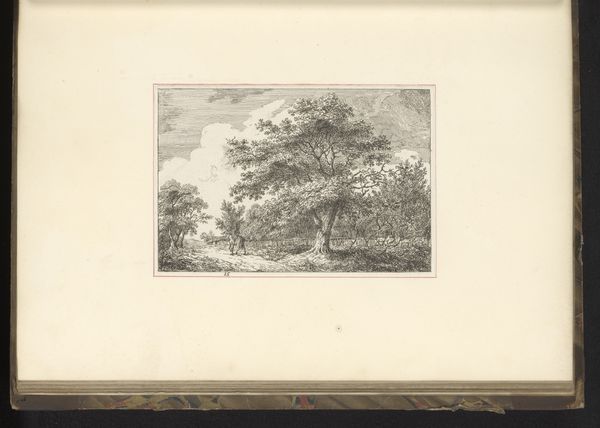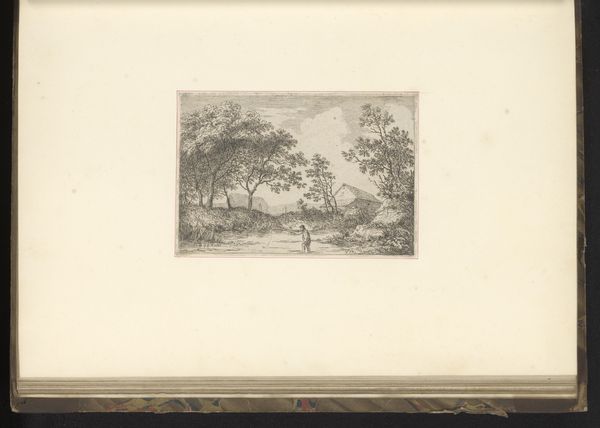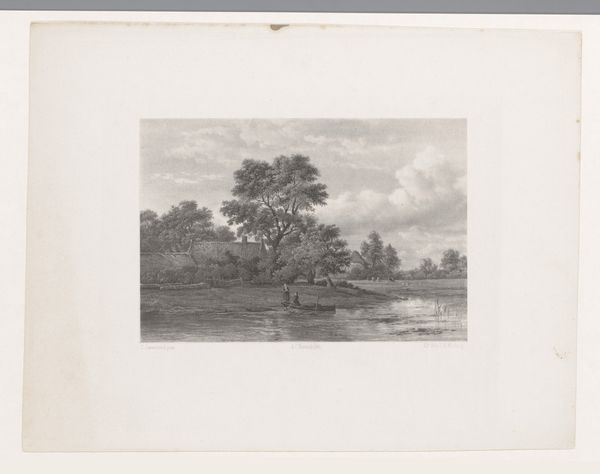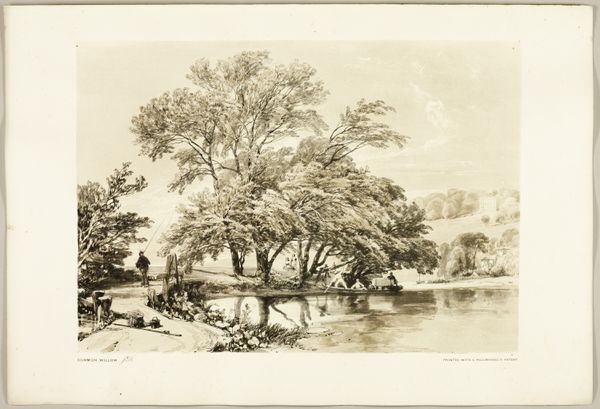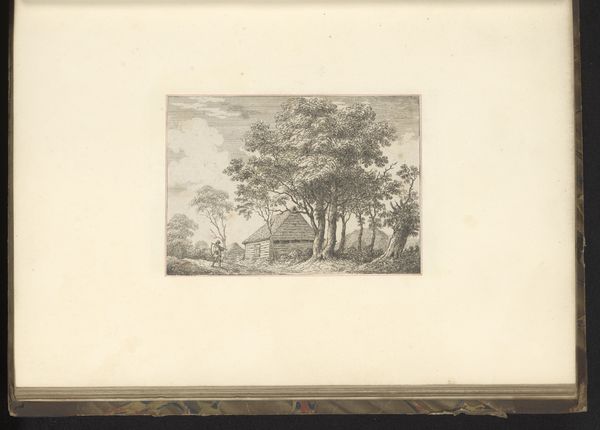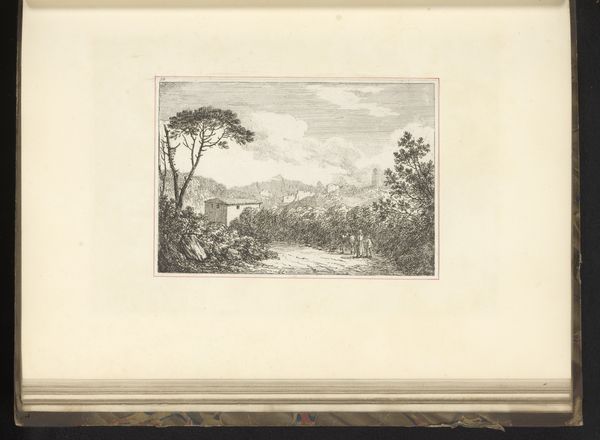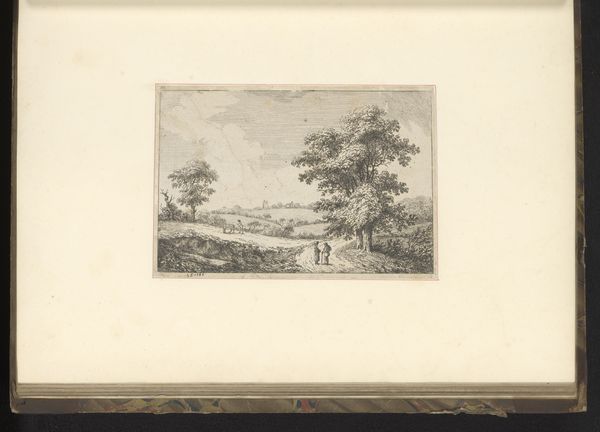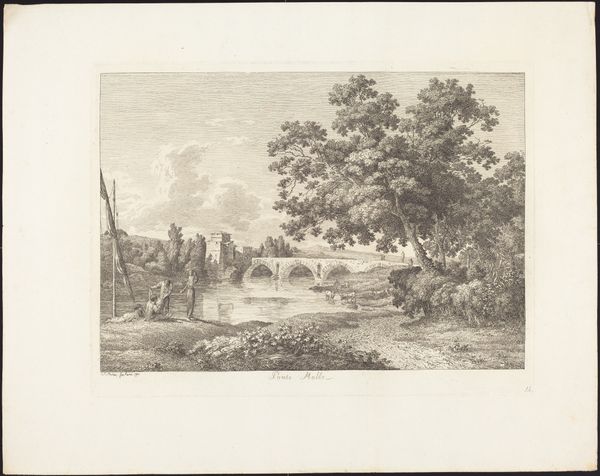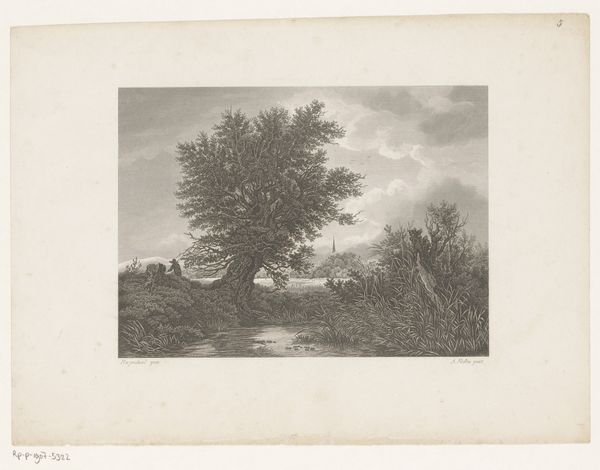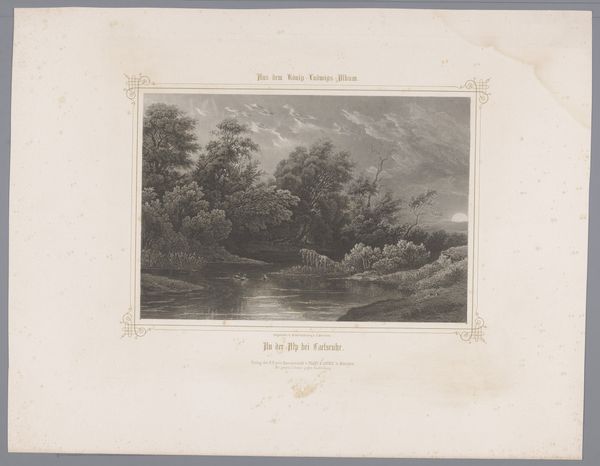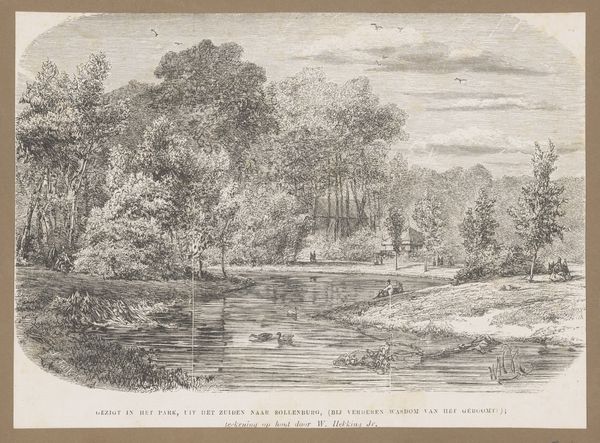
print, paper, engraving
#
neoclassicism
# print
#
landscape
#
paper
#
genre-painting
#
engraving
Dimensions: height 168 mm, width 222 mm
Copyright: Rijks Museum: Open Domain
Editor: So, this is "Landscape with Figures by a River," an engraving by Edward Edwards, sometime between 1786 and 1790. It's remarkably detailed. I find its atmosphere very calm. What's your take on this piece? Curator: This engraving is interesting from a historical perspective. Consider the period: the late 18th century, with Neoclassicism gaining prominence. How does this landscape either reinforce or challenge the aesthetic and social values of the time, do you think? Editor: Well, it's pastoral, not overtly grand or historical, like many Neoclassical works. More of a focus on everyday life. Curator: Precisely! While it contains Neoclassical elements in its composition and pursuit of idealized beauty, its engagement with the mundane activities of rural life aligns it with a broader Enlightenment interest in nature and social reform. Edwards produced this at the end of the 18th Century, when there was a strong and emergent market for such idyllic scenes amongst the middle classes. This print democratises art; enabling many more people to have access to art, and to be patrons. Editor: Ah, that makes sense. So it's about accessibility as well as aesthetics? Did the public exhibition of artworks influence what kinds of work artists created and sold? Curator: Absolutely. Public exhibitions helped shape artistic careers. Successfully exhibited artists enjoyed societal recognition. They had an elevated public position, demonstrating the tight connection between art, social structure and recognition. What would be the social impact if everybody had access to the best paintings and sculptures? Editor: I hadn't really thought about it like that, but the engraving allowed the "everyman" to have a glimpse into this kind of idyllic beauty in their own home, making it more personal to them. Curator: Indeed. It really highlights the democratising power of art. This simple landscape, through its mode of production and consumption, participated in significant social shifts of the time.
Comments
No comments
Be the first to comment and join the conversation on the ultimate creative platform.
